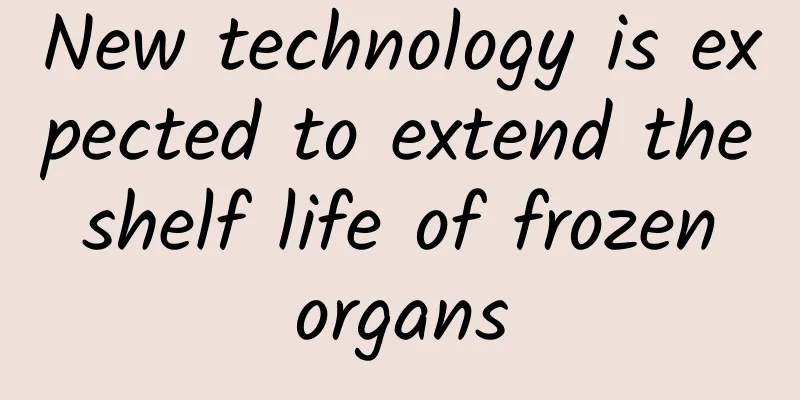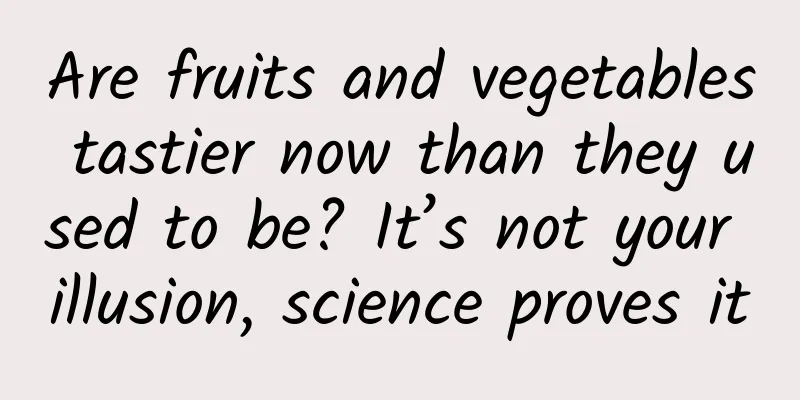New technology is expected to extend the shelf life of frozen organs

|
Image courtesy of Visual China Relying on "freezing technology" to travel through thousands of years and wake up in the future is a common plot in science fiction novels. Although it is still a long way to achieve freezing and reviving the entire organism, the technological progress of freezing organs still brings people many surprises. Recently, a study published in the academic journal Nature Communications showed that researchers at the University of Minnesota have achieved long-term freezing and thawing of kidneys in rats, and these frozen kidneys can restore full renal function after transplantation. This is the first time that scientists have confirmed that mammalian organs can be successfully transplanted and maintained after being frozen and thawing. This has proposed a new technical solution for freezing organs. Short storage time of organs Organ transplantation is the last straw after human organ failure. Hundreds of thousands of organ transplants are performed around the world every year, which have prolonged hundreds of thousands of lives. In China, 300,000 people are on the verge of death waiting for organ transplants every year, but only more than 10,000 of them can be reborn through organ transplants. At present, my country can already carry out human liver, kidney, heart, lung, pancreas, small intestine and other 6 kinds of human organ transplantation operations; among them, the surgical techniques of kidney transplantation and liver transplantation are already very mature. However, organ transplantation operations are not widely popularized, and one of the main reasons is that the "shelf life" of donor organs is too short. "Organ preservation in vitro is a necessary step in organ transplantation surgery, and organ freezing and thawing are key technologies to prolong the organ preservation time. Breakthroughs in this area may reshape the current clinical system of organ transplantation." said Dr. Yeqi Nian, attending physician of the Organ Transplantation Center of the First Affiliated Central Hospital of Nankai University and project leader of the Transplantation Medicine Research Institute of Nankai University. At present, the traditional organ preservation technology is mainly low-temperature static cold preservation, and the "shelf life" of this preservation technology is indeed a bit short. For example, the heart can be preserved for 4 hours, the liver can be preserved for 12 hours, and the kidney can be preserved for about 24 hours; digestive organs such as the pancreas and small intestine are more difficult to preserve and have a shorter preservation time due to the presence of residual bacteria, digestive enzymes, and tissue-resident lymphocytes. "Therefore, current organ transplant surgeries are generally emergency surgeries, which greatly restrict doctors' treatment of patients in terms of space and time." Nian Yeqi gave an example. In order to allow patients to undergo surgery as soon as possible, the region is considered when looking for patients with successful matching, to avoid situations such as prolonged organ preservation time due to time-consuming travel, missing the best time for surgery, or even losing the opportunity for surgery. At the same time, the time left for doctors to prepare and examine the surgery is shortened, and they can only complete basic examinations and preparations, which may lead to the risk of insufficient preoperative evaluation and inadequate preoperative treatment. To this end, researchers have been exploring new technologies to transform ex vivo organs from "short-term preservation" to "long-term preservation." "In layman's terms, the technology of 'long-term preservation' of ex vivo organs mainly consists of two steps: 'freezing' and 'thawing.'" Nian Yeqi explained that the current freezing and thawing of organs mainly includes the preparation of organ cryogens, organ cryogen perfusion, organ cooling, continuous organ cryopreservation, organ thawing, and organ lavage. Among them, the most commonly used method in freezing technology is called "vitrification," which uses high-concentration cryoprotectants and faster freezing rates to prevent the formation of ice crystals in organ cells at ultra-low temperatures, thereby preventing ice crystals from damaging cells and ultimately causing organ damage. During the thawing process, the rate also needs to be controlled so that the organs are heated evenly. Recently, the development of low-temperature mechanical perfusion and normothermic mechanical perfusion technologies has extended the ex vivo storage time of organs to a certain extent, winning more time for patients and physicians. However, current technologies are generally limited to extending the ex vivo storage time of organs from a few hours to a few weeks (a few weeks is limited to preclinical trials), so ex vivo storage of organs is still within the scope of "short-term preservation". Organ cryopreservation is much more difficult than cell cryopreservation In recent years, with the rapid development of gene and cell technology and products in medical research and application, people often come into contact with information related to cryopreservation of stem cells, eggs, sperm and embryos. Many people can't help but ask, cells can be used when needed after so many years of cryopreservation, and ex vivo organs are also composed of cells, why can't organs be preserved using the same technology? Li Xiangguo, vice president of Tianjin Stem Cell Development and Application Association, introduced that the current stem cell cryopreservation technology is to store cells in a deep low temperature environment to reduce cell metabolism and put cells in a dormant state, which is a technology for long-term storage. The specific method is to use the gradient cooling method to transfer the prepared cells to a liquid nitrogen tank at -196℃ for long-term storage after program-controlled cooling. "This technology can be used to preserve various types of cells, including embryonic cells," said Li Xiangguo. In theory, cell cryopreservation can achieve permanent storage. Doctors and patients can obtain cryopreserved cells at any time for treatment, research or regenerative medicine applications. However, stem cells, embryos, etc. fall into the category of cell freezing and thawing. If the technology of freezing cells is used to freeze organs, this is obviously not a simple quantitative change process, and it will face more difficulties when applied to tissues the size of entire organs. "First, cryoprotectants cannot penetrate evenly into larger tissues. When an organ is larger, the time required for its central part to solidify will be longer, which will lead to the formation of ice crystals." Nian Yeqi also introduced that the cryogen used for cell freezing only needs to be non-cytotoxic, while the cryogen used for freezing organs needs to specifically consider its toxicity to the organ. What is even more difficult is that each organ is composed of multiple cells, each with different characteristics and functions. The same cryogen may have different toxic effects on different types of cells. No matter which type of cell is damaged, it will affect the function of the organ. Secondly, the frozen state of a single cell or a tiny embryo with only about 100 cells is easier to evaluate, and cell damage during the thawing process is also easier to evaluate. As an organ with a tissue structure, it needs to be heated evenly during the thawing process. Uneven heating can cause expansion or contraction forces between different tissue structures of the organ, causing physical damage to the organ. "Currently, 'vitrification' has only partially solved the problem of 'freezing' organs, but problems such as ice crystal formation during freezing, temperature control during freezing and thawing, the need for overall uniform thawing of tissues and organs during thawing, and ischemia-reperfusion injury still exist," said Nian Yeqi. Or will reshape the clinical organ transplantation system The study published in Nature Communications solved the problem of rewarming larger organs. The researchers developed a "nano-rewarming" technology: during the freezing process, iron oxide nanoparticles are added to the protective agent when perfusing the organ. When rewarming, the frozen organ is placed in a radio frequency coil. The electric current will generate an induced magnetic field, generating heat through the iron particles in the organ. The protective agent is evenly perfused into the organ through the capillaries. Since the radio frequency electric field penetrates the tissue without attenuation, the heating rate is guaranteed while the heating is also uniform. "The 'nano-rewarming' technology of the University of Minnesota research team also includes the use of ethylene glycol to replace propylene glycol in the original protective agent to develop a new refrigerant VMP, which reduces the toxicity of the refrigerant." Nian Yeqi introduced that the study showed that rat kidneys preserved for 100 days can still remain active after thawing, and rats that received kidney transplants successfully survived the 30-day study period. Since the rewarming problem following organ "vitrification" technology has been difficult to solve, some scientists have begun to explore new ways to bypass these difficulties. Professor Taylor's team at Harvard University designed a synthetic sugar to protect the liver based on the freezing and thawing principles of the Arctic wood frog in nature, and preserved the human liver at -4°C for 27 hours. In addition, by combining the synthetic sugar with the biological ice core Snomax, the team can store tissues at -15°C for 5 days, and the tissue damage after thawing is lighter than that of the control group. In addition, some scientists have worked hard on the "freezing" process. For example, the team at the University of California, Berkeley, froze the organs at a higher pressure without causing damage, thereby limiting the formation of ice crystals. Using this strategy, the research team stored a pig heart at -4°C for 21 hours and then transplanted it into a healthy pig. The heart beat smoothly after the transplant. And this strategy does not require the use of a large amount of cryoprotectants, reducing the toxic side effects on the organs. Talking about the impact of the development of organ and cryo-thaw technology on future medical treatment, Nian Yeqi said that this will reshape the current clinical organ transplantation system. "After this technology matures and is applied clinically, organ transplantation will no longer be just an emergency operation, and there will be more time to complete preoperative preparations. The allocation system will also have more time to allocate organs and achieve the best tissue matching, and patients in remote areas will also be able to get more transplant opportunities. Organs with low utilization rates, such as the heart, lungs, and pancreas, can be better preserved and transported." Nian Yeqi said with anticipation. |
<<: Why is it so easy to rebound after losing weight? The truth is heartbreaking...
Recommend
How about Begeel watches that inherit a century of watch history and culture?
Begeel is a watch brand born in Switzerland. It i...
After watching the movie "Twister", I had this to say, "Why does the intensity of a tornado have to be determined on the spot?"
I watched the newly released movie "Twister&...
Half of Americans refuse to buy fully self-driving cars, and the safety of self-driving cars is causing anxiety
Recently, a new survey by foreign media found tha...
White is not the base color of the earth!
As my country's urbanization and modernizatio...
Guide to starting a new Tik Tok account!
1. The current situation of Douyin live streaming...
There are three points that can easily lead to misleading when buying a mobile phone. If you understand them, you will be considered an expert and can save a lot of money.
Today, I will talk to you about 3 points that are...
Interesting story: Is the terrifying nightmare really an attack by demons and monsters?
The reason I bring up this issue again is that I ...
Where to find the Belt and Road Initiative? The answer lies in the mother-of-pearl bronze mirror!
Where to find the Belt and Road Initiative? The a...
Why can a mobile phone be located even after it is turned off? How many secrets do you know about these mobile phones?
Checking on someone? Looking for someone due to a...
Do you always want to check your partner's phone? It may be your hormones
Review expert: Chen Mingxin, national second-leve...
Feng Shui without asking for help: Guannan teaches you how to calculate Feng Shui
Course Outline: "Feng Shui turns around, and...
Why are weather forecasts always wrong when modern science is so advanced?
Seeing that the weather forecast said there would...
Why does it take Venus 243 days to rotate, but the atmosphere only takes 4 days to revolve around Venus?
[Mobile software: Bo Ke Yuan] Images from the Aka...
What does it mean when the father of Android steps down?
[[122105]] Early this morning Google dropped a bo...









